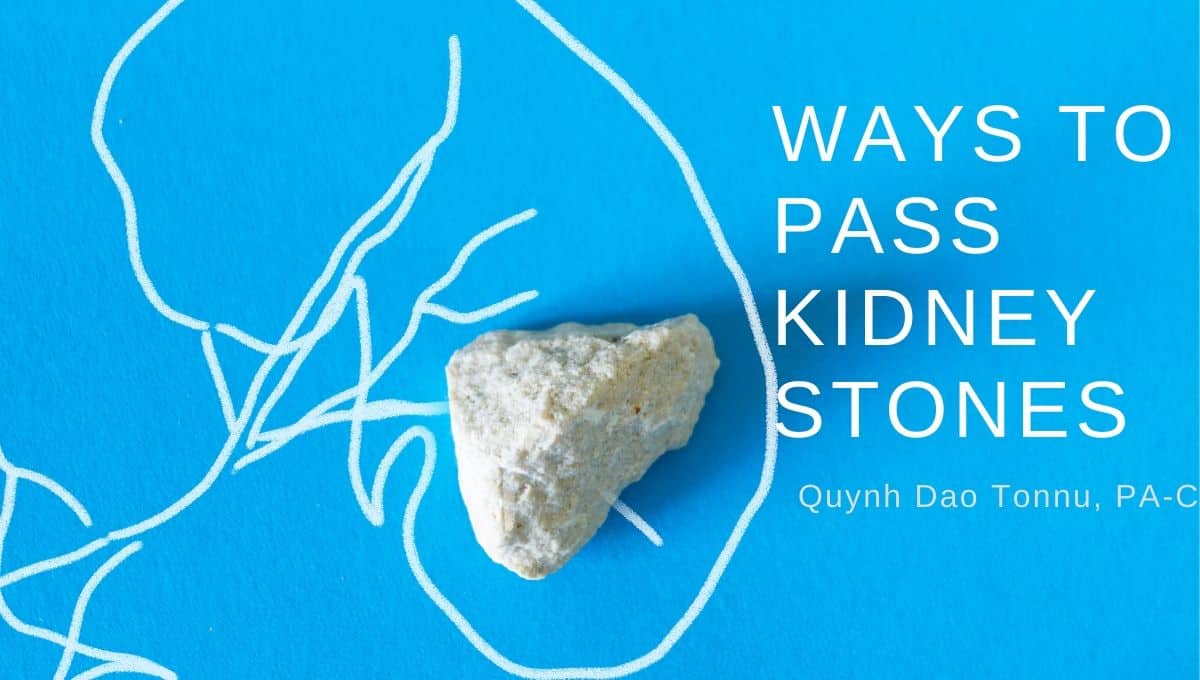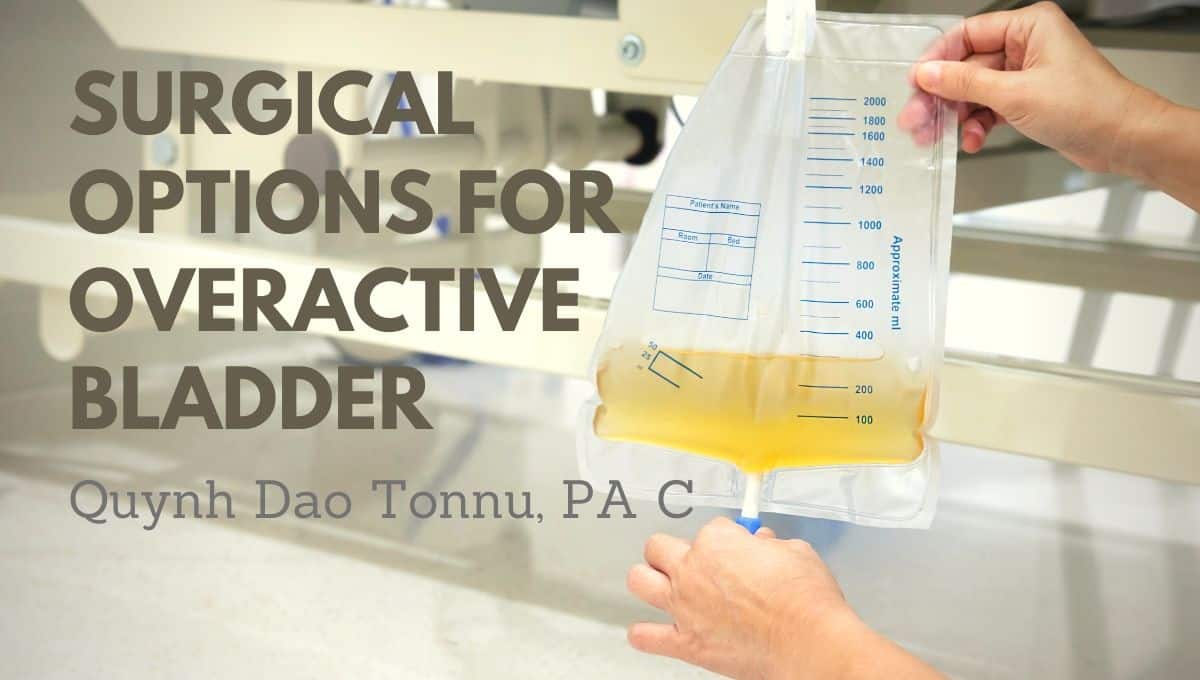Key Takeaways:
- Incontinence in women can have different causes and diagnosis and requires tailored treatment options.
- Breaking the stigma and silence around incontinence is essential to encourage women to seek help.
- Advanced Urology Institute in Orange City, FL offers top-tier medical support and personalized treatment options to help women regain control over their lives.
Quynh-Dao Tonnu, a leading physician assistant at Advanced Urology Institute, offers expert insights into a topic that is often whispered about, but seldom openly discussed — female incontinence. Hidden behind hushed tones and uneasy glances, incontinence in women is a common but rarely explored issue.
Overactive Bladder and Female Incontinence

Tonnu attributes female incontinence to two common reasons. The first could be a narrowed urethra, which might require medical procedures or dilation. The second possibility is an overactive bladder where, as Tonnu explains, “The bladder contracts inappropriately, making them go more frequently.”
What’s important to note here is that both situations can have profoundly different approaches for diagnosis and treatment. Incontinence, and especially overactive bladders, can disrupt the rhythm of life, making it essential to “assess the underlying cause.”
Breaking the Silence
For many women, speaking about their incontinence can feel invasive and embarrassing. However, Tonnu’s empathetic and understanding approach encourages open conversations about this condition. As a physician assistant, and more importantly, a woman herself, Tonnu establishes a comforting sense of intimacy that encourages patients to share their experiences.
“I personally don’t find it particularly difficult to have that conversation with patients,” says Tonnu. “Perhaps because I’m female there’s already a sense of intimacy that they can share with me.”
Recognizing the Need for Help
Undoubtedly, opening up about incontinence is a bold step, signifying the point where the condition has become bothersome enough for the individual to seek help. Tonnu remarks, “Once they’ve consciously made the decision to make an appointment and come in, they’re usually willing to talk about it.”
This willingness to seek help and discuss their issues is a testament to the motivational environment created by Tonnu and her colleagues at Advanced Urology Institute. When a woman is ready to address her concerns, it means that she has acknowledged the problem and is prepared to take the necessary steps towards her treatment.
Choosing the Right Support in Orange City, FL
Tonnu’s dedicated approach to handling female incontinence provides hope for many women silently coping with the condition. By encouraging open conversations and providing personalized treatment options, she helps these women regain control over their lives. Located in Orange City, FL, Tonnu and the team at Advanced Urology Institute offer top-tier medical support to anyone facing urological concerns.
As the largest urology practice in Florida, the Advanced Urology Institute stands at the forefront of urinary health issues like overactive bladder and female incontinence. Their team of experts, led by individuals like Quynh-Dao Tonnu, PA-C, work tirelessly to ensure that each patient receives the best possible care. Because at the end of the day, it’s not just about treating a condition – it’s about reclaiming your life from the shadows of incontinence.
References:
- Bladder Problems | Advanced Urology Institute. (2023, September 19). Advanced Urology Institute. https://www.advancedurologyinstitute.com/conditions-we-treat/bladder-problems/
- Advanced Urology Institute. (2023, May 19). What is Urinary Incontinence in Women and how can Dr. Amar Raval help? | Advanced Urology Institute. Advanced Urology Institute. https://www.advancedurologyinstitute.com/what-is-urinary-incontinence-in-women-and-how-can-dr-amar-raval-help/ \
- Advanced Urology Institute. (2023, April 24). How does Dr. Rishi Modh treat female urinary incontinence? | Advanced Urology Institute. Advanced Urology Institute. https://www.advancedurologyinstitute.com/how-does-dr-rishi-modh-treat-female-urinary-incontinence/
- Hartmann, K. E., McPheeters, M. L., Biller, D. H., Ward, R. M., McKoy, J. N., Jerome, R. N., Micucci, S. R., Meints, L., Fisher, J. A., Scott, T. A., Slaughter, J. C., & Blume, J. D. (2009). Treatment of overactive bladder in women. Evidence Report/Technology Assessment, 187, 1–120, v. https://www.ncbi.nlm.nih.gov/pmc/articles/PMC4781496/
- NHS Choices. (2023). Overview – Urinary incontinence. https://www.nhs.uk/conditions/urinary-incontinence/
- Elad Leron, Weintraub, A. Y., Salvatore Andrea Mastrolia, & Schwarzman, P. (2018). Overactive Bladder Syndrome: Evaluation and Management. Current Urology, 11(3), 117–125. https://doi.org/10.1159/000447205
- Urinary incontinence | Office on Women’s Health. (2014). Womenshealth.gov. https://www.womenshealth.gov/a-z-topics/urinary-incontinence
Transcription:
My name is Quynh-Dao Tonnu, I’m a physician assistant at Advanced Urology. So it could be two things, they could have like a narrowed urethra or maybe they need to be dilated or have a procedure or it could be they have overactive bladder and they’re bladders kind of contracting inappropriately and making them go more frequently so we kind of have to assess the underlying cause. I personally don’t find it particularly difficult to have that conversation because maybe because I’m female and so there’s also there’s already like a sense of intimacy that they can share with me but also if once they’ve consciously made decision to make an appointment and come in then they’re usually willing to talk about it because it’s gotten to that point where it’s bothersome to them.





 Finding the best way to help a patient to pass a kidney stone depends on several factors. Not all patients are the same, and the size and difficulty of their kidney stones vary as well. If the stones are smaller than 5 millimeters, the urologist will want the patient to try and pass them naturally. This is the least invasive way to pass
Finding the best way to help a patient to pass a kidney stone depends on several factors. Not all patients are the same, and the size and difficulty of their kidney stones vary as well. If the stones are smaller than 5 millimeters, the urologist will want the patient to try and pass them naturally. This is the least invasive way to pass 
 However, for some people, these methods are not enough to ensure they can live a healthy, fulfilling life. In these situations, surgical intervention is an option to correct overactive bladder problems.
However, for some people, these methods are not enough to ensure they can live a healthy, fulfilling life. In these situations, surgical intervention is an option to correct overactive bladder problems.
 Bladder control problems can vary, from occasional urine leakage that happens when you cough or sneeze, to having sudden urges to urinate so strong you do not make it to the toilet in time. There are several basic
Bladder control problems can vary, from occasional urine leakage that happens when you cough or sneeze, to having sudden urges to urinate so strong you do not make it to the toilet in time. There are several basic 
 Certified physician assistants go through a rigorous graduate-level training program that takes more than two years to complete. The degree program must be accredited by both the Committee on Allied Health, Education and Accreditation, and the Accreditation Review Commission on Education for the Physician Assistant. After successful completion of the academic portions, the graduates must pass the national Physician Assistant National Certifying Exam. The final stages include formal application with the Florida Board of Medicine and completion of 2,000 hours (about one year) of supervised clinical practice.
Certified physician assistants go through a rigorous graduate-level training program that takes more than two years to complete. The degree program must be accredited by both the Committee on Allied Health, Education and Accreditation, and the Accreditation Review Commission on Education for the Physician Assistant. After successful completion of the academic portions, the graduates must pass the national Physician Assistant National Certifying Exam. The final stages include formal application with the Florida Board of Medicine and completion of 2,000 hours (about one year) of supervised clinical practice.